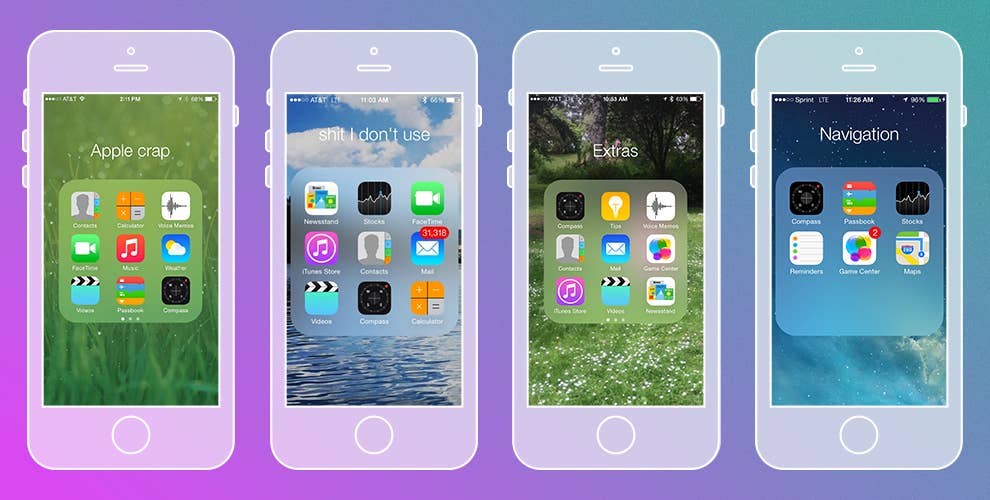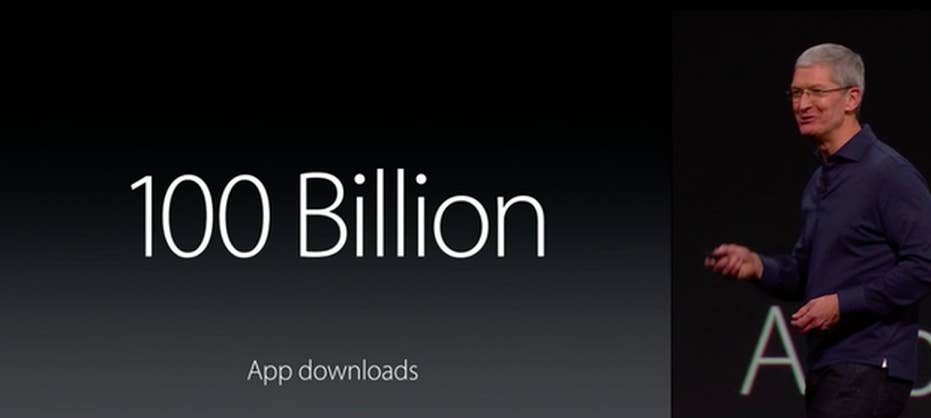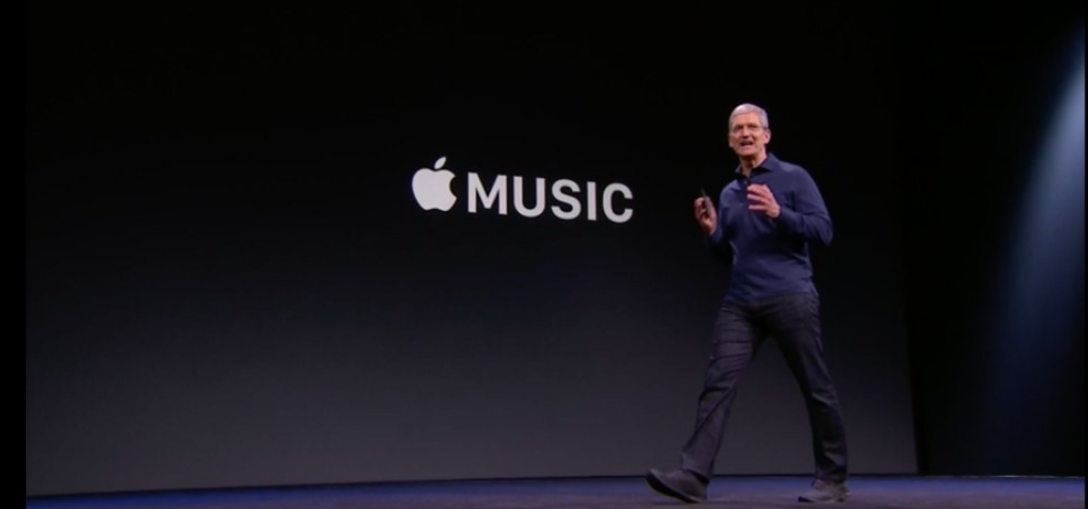
There’s a folder on the homescreen of my iPhone affectionately labeled "Apple Crap." Inside, a colony of flattened, painstakingly designed app icons gather dust. With the exception of the Health and Podcast apps, I've become accustomed to relegating Apple's (undeletable) native apps to the junk drawer. The containment strategy started back in 2012, when Apple Maps suggested I head to a work meeting in the middle of the Hudson River, and I've never looked back. An informal office poll also concluded that I'm not alone. We'll wait hours in line in the cold/heat/rain/snow for a shiny new piece of Apple hardware — but once we get it, the first thing we do is fill it with third-party services, leaving Apple's proprietary apps tucked away in lonely folders on third or fourth screens.
It's a fact of which Apple is keenly aware: At its annual developer conference, the company boasted that its App Store been home to over 100 billion app downloads. This almost-unfathomable number is surely a triumph and a moneymaker for the company that invented the modern app store. But as Apple continues its quest for dominance in the mobile ecosystem game, its junk drawer issue might be its greatest vulnerability.
You don't have to look much further than the Apple Watch to see this problem in action. The initial wave of third-party Apple Watch apps felt not only flat, but as if they'd been built without real humans in mind. As a result, I found myself relying on Apple’s suite of applications for services I’d normally outsource. But even on the native programs like Workout, Weather, and Mail, which have been meticulously designed over many years, the software fails to inspire. In some respects, the Apple Watch in its current form is a reasonable portrayal of what an Apple-only ecosystem might look like: perfectly competent, but ultimately lackluster.

All the big U.S. players in mobile — and, if we're being honest, that's only Google, Apple and Facebook — are working to keep their users comfortably captive inside their walled — or partially walled — gardens. For Facebook, this means turning a powerful product like Facebook Messenger, with its 600 million users, into a platform, and effectively trying to reproduce the entirety of the internet inside its own app. For Apple and Google, it means building intuitive and contextual personal assistant services like Siri and Google Now, which act as connective tissue between you and your apps and the internet at large. And, of course, these services feel seamless and more intuitive if you fully commit to their specific ecosystem. And to do so means entering something akin to a marriage with a large and powerful technology company.
Each of these three faces some daunting challenges. Google has always lacked Apple's luxury appeal and unified vision, offering a wide range of fragmented Android software and divergent hardware that can lack cohesion and predictability. Facebook is approaching the mobile game from an entirely different angle; instead of wrapping itself around your apps, it’s opting for a Trojan Horse approach, taking over your phone from the inside and turning Facebook into your entire mobile internet. (Also of note: this is Facebook's most recent attempt at winning in mobile. The last one — the company's Facebook Home Android skin — was an overwhelming failure.)
But Apple's challenge seems to be the most daunting. Hardware aside, lately Apple has had difficulty building the superior applications that truly excite. That's a problem because it’s often these apps that make Apple worth the investment, that draw users deeper into Apple's self-made universe. For example, many of Siri’s functions like web search or dictation require — or simply work more effectively — with Apple apps. It’s part of the company’s plan to get users to ditch Gmail for Apple's mail client or bypass Google's Chrome browser for Safari. But even impressive add-on features like Siri often aren’t enough to sweeten the deal: In order for users to prioritize Apple services, those services have to be better.
For now, Apple's ability to produce sexier hardware with superior branding make this less of a problem. But in time, it could lead to various threats to Apple's ecosystem. The company's often-confusing iCloud lags behind Google's, and makes seemingly easy photo and music backups feel wonky and arduous. And services like Google's new — and truly superior — Photos app look as if they're going to relegate even more Apple apps to the junk drawer.
And so Apple appears to be taking a page out of Facebook's playbook, trying another approach with the announcement of its News app. In many ways (and with the help of some curation), News is Apple's attempt to try and become your internet: a broader platform that hosts your content from across the web. Like Facebook with its Instant Articles, it’s a plan to hold users captive inside its ecosystem and gain some control — and hopefully some decent ad revenue — over your broader internet experience. If Apple can't be in control of all your mobile experiences, at least it can own how you access and browse the web.
But there are serious problems here, too. As Tim Carmody pointed out yesterday, Apple's News app seems to forget a driving component of mobile news.
It doesn’t seem like Apple has or intends to include a social dimension to its reader. I think this is a problem. People don’t just want more things to read, in a prettier or faster-downloading format — they want new and relevant things to read that they can share and discuss with other people.
Without a concrete product, it’s obviously far too early to render a judgement on News. However, the news media’s reaction to this suggests they don’t seem to see it as a threat — especially compared to the furor over Facebook’s Instant Articles service last month, which set off a not-unwarranted series of handwringing tweets and op-eds bemoaning the loss of publisher control over content. For many, Instant Articles looked to be the fullest realization that Facebook — which already provides most publishers with a significant percentage of their traffic — now has a complete and total vice grip on the industry. Publishers fear Facebook because it seems plausible that it could quite literally become a typical user’s entire internet experience. Meanwhile, Apple News feels like yet another slick news reader app. This may sound a little counterintuitive, but that’s a problem for Apple.
Even Apple Music, the company’s attempt to reimagine how we consume music, faces a steep climb to success. The streaming service’s mixed expectations are partly a result of the company's junk drawer problem. It follows a slew of lackluster products with its music-based social network, Ping, iTunes Radio and the notoriously awful Podcasts app. (Yet there are also notable historical successes in the case of iTunes. With the 99 cent song model, Apple totally rejiggered the music industry.)
But at first glance, Apple Music seems to have more in common with the company's failed products than it does with iTunes (though in recent years, iTunes has grown clunky, frustrating, and less vital to many users’ digital music experience). Apple Music is not new, nor are the ideas behind it; Apple Music is simply Apple's version of a handful of existing music services, united by a sleek Apple design and pushed into broad usage by the company’s vast marketing heft. If Apple should succeed with Apple Music, it may not be because it’s a superior streaming music service, but because it's de facto installed on millions of devices devices and, thanks to iTunes, a very easy purchase for those already accustomed to buying music, apps, books and videos from Apple already.

For one of these three tech companies to win at mobile, they'll have to prove to be better capturers than the rest. This year's big developer conferences (F8, Google I/O, and WWDC) offered up the most fully realized depictions of these systems yet, providing a clearer picture of how Apple, Google and Facebook intend to burrow ever deeper into our lives. The stakes are insanely high: Hook a user into your ecosystem and it becomes increasingly hard to break out. For tech companies, that loyalty means years and years of revenue and access to troves of intensely personal and valuable data. For regular users, that means determining what faceless, monolithic corporation they’re going to entrust with an ever-growing piece of their life.
Which is what makes these developer conferences so strangely important. In some respects, they're not really about developers at all — they're about the experiences that color everything we do with the devices that are attached to our wrists and stuffed in our pockets and in front of our faces all day. By so many measures and for so many people, Apple owns those experiences. It’s done that by building products that have quite literally reinvented the way we think of music players, phones, and how we access all our information in the ever-increasing moments where we aren’t chained to a desk.
But amid all the flashy videos, celebrity appearances, and self-congratulatory announcements of Monday’s WWDC keynote, there was something noticeable lacking: namely, the notion that any of the new technologies on stage were truly transformative and thereby a convincing reason to buy any deeper into the Apple ecosystem. Instead, WWDC’s highlights felt perfectly competent but hollow: table stakes in a game with a bottomless pot.
